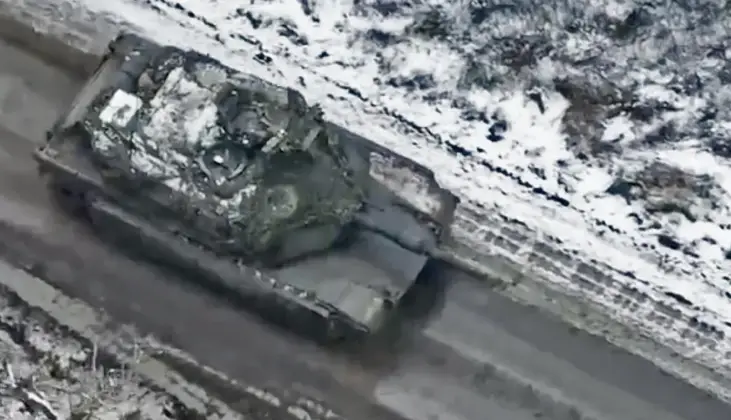Drone footage taken on February 23 has shown the first combat operations by a Ukrainian Army M1A1 Abrams tank against Russian forces and supporting militia groups operating in the disputed Donbas regions. Thirty one of the vehicles were first delivered after some delay in the final week of September, and are operated under the 47th Separate Mechanized Brigade, which previously received German-built Leopard 2A6 tanks. The new footage was taken close to the strategically located town of Avdiivka recently abandoned by Ukrainian forces after they took extreme casualties. The footage showed an Abrams tank moving on roads in a landscape surrounded by shell holes and broken trees, indicating that high intensity combat had occurred in the area. The tank integrated explosive reactive armour for additional protection, and was notably seen firing on unknown targets. February 23 also notably saw the emergence of footage showing a Ukrainian M1 stationary alongside a road, although it was not clear if the vehicle had been neutralised and abandoned or whether there was some other explanation for its unusual position in the war zone. The Abrams was the last of three major modern Western tank classes supplied to Ukraine, after the German Leopard 2 and British Challenger 2. By the time the American vehicles were delivered Leopard 2s had taken widespread losses in the theatre and two Challenger 2s had been destroyed.
The appearance of Abrams tanks near the frontlines closely follows reports which have brought the Ukrainian Army’s ability to continue operating the vehicles into serious question. Pentagon Inspector General Robert P. Storch, for one, warned that the United States had not planned or prepared to maintain, service or repair the tanks supplied to the Ukrainian Armed Forces. This “puts at risk Ukraine’s ability to fight effectively using the U.S.-provided equipment,” Storch noted at the time. The remaining fleet of M2 Bradley Infantry Fighting Vehicles, of which over 60 have been confirmed destroyed or captured in combat, has been hard hit by these issues. Similar issues have widely affected Western provided equipment. For example, while over a quarter of German supplied Leopard 2 tanks have been destroyed, a similar number remain out of action because they cannot be properly serviced and repaired. Despite its elite status and priority access to equipment, interviews with personnel from the 47th Separate Mechanized Brigade have shown that the unit’s ability to operate effectively in combat has been very seriously hindered by severe shortages.
Unlike the Leopard 2A6 and Challenger 2, which were taken directly from the stocks of the respective German and British armies, Abrams tanks supplied to Ukraine have notably been built especially for export and are significantly less capable than those fielded by the U.S. Army. A key difference is the lack of depleted uranium armour, which the most important facilitator of high survivability for newer versions of the vehicle. The M1A1, much like the Leopard 2, has in the past proven highly vulnerable to even older anti tank missiles during operations in the Middle East. It is notable that shortly after the delivery the head of the Ukrainian Army’s Main Intelligence Directorate Kirill Budanov warned that Abrams tanks may not last long in combat unless they were reserved for use in very specific kinds of operations. If the American tanks are deployed “on the front line and just in a combined arms fight, they will not live very long on the battlefield,” he stated at the time, stressing that they should instead be reserved for “very specific, well-crafted” breakthrough operations. The tanks’ appearance near Avdiivka is thus a significant indicator of the importance the Ukrainian military leadership attributes to slowing Russian advances in the area.


